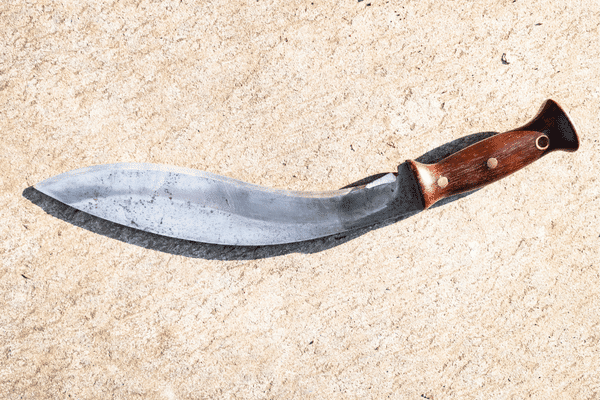Five Key Considerations for Finding Your Perfect Skinning Knife.
First of all,
Choosing the correct skinning knife is crucial for producing precise, clean cuts and guaranteeing safety when performing different activities, regardless of whether you're an experienced hunter, an outdoor enthusiast, or an aspiring chef. It can be difficult to choose the best skinning knife because there are so many possibilities. This post will go over five important factors to assist you in choosing the ideal skinning knife for your requirements and making an informed choice.
1. Blade Form and Type (Workability):
The fundamental components of every skinning knife are the type and form of the blade. The performance and usefulness of the knife are directly affected by this decision. Think about the following choices:
Drop-Point Blade: This versatile design is ideal for general skinning and hunting tasks. The spine of the blade curves gently to the tip, making it suitable for a wide range of cutting actions.
Clip-Point Blade: A clip-point blade features a concave back with a sharp, well-defined point. This design excels in precision work and is often preferred by those looking for fine control when skinning.
Trailing-Point Blade: The trailing-point blade has an upward curve towards the tip, which makes it perfect for delicate and detailed work. It allows for controlled slicing and is often used for games with thin hides.
Choosing the right blade type and shape depends on the specific tasks you'll be performing with your skinning knife.
2. Blade Material (Durability and Sharpness):
The material of the blade is crucial for both durability and sharpness retention. Quality skinning knives are typically constructed from stainless steel or high-carbon stainless steel, which offer the benefits of rust resistance and ease of sharpening. Among the popular choices, 440C stainless steel is known for its exceptional balance between durability and sharpness, ensuring your skinning knife remains reliable over time.
3. Handle Comfort and Material (Ergonomics):
The handle of a skinning knife is your point of contact with the tool. It's essential that it offers a secure and comfortable grip, especially during extended use or when conditions are less than ideal. Materials like wood, bone, G-10, rubber, and synthetic composites are commonly used for handles. When choosing a handle material, consider the environmental conditions you'll be in, as well as your personal preference for grip. A comfortable and ergonomic handle will help reduce fatigue and improve precision during your skinning tasks.
4. Knife Design and Ergonomics (Handling and Control):
The overall design of the knife, including the handle shape, balance, and weight, plays a significant role in how easy and effective it is to use. Look for a skinning knife with an ergonomic design that suits the natural contours of your hand. An excellently balanced knife with a well-designed handle provides a comfortable grip and reduces the risk of fatigue during long tasks. Proper ergonomics enhance your control and precision while minimizing the likelihood of accidental cuts.
5. Safety Features (Accident Prevention):
Safety is paramount when handling sharp tools like skinning knives. Ensure that your chosen knife has safety features such as:
Finger Guard: A finger guard, often integrated into the blade design, helps protect your fingers from accidental contact with the sharp edge.Choil: The choil is the unsharpened part of the blade near the handle, allowing you to place your index finger safely and control the blade better.
Locking Mechanism: For folding skinning knives, a secure locking mechanism is essential to prevent the blade from accidentally closing while in use.
Conclusion:
Finding the perfect skinning knife is a personalized process that depends on your intended use, personal preferences, and budget. The five key considerations - blade type and shape, blade material, handle comfort and material, knife design and ergonomics, and safety features - will guide you toward making an informed decision. Take your time to assess your needs, handle different knives, and find the one that feels like an extension of your hand. A well-chosen skinning knife will not only make your tasks easier and more enjoyable but also ensure a higher level of safety and precision in your outdoor or culinary adventures.
Also, read The Skinning Knife: A Masterpiece of Precision and Utility.






Comments
Post a Comment